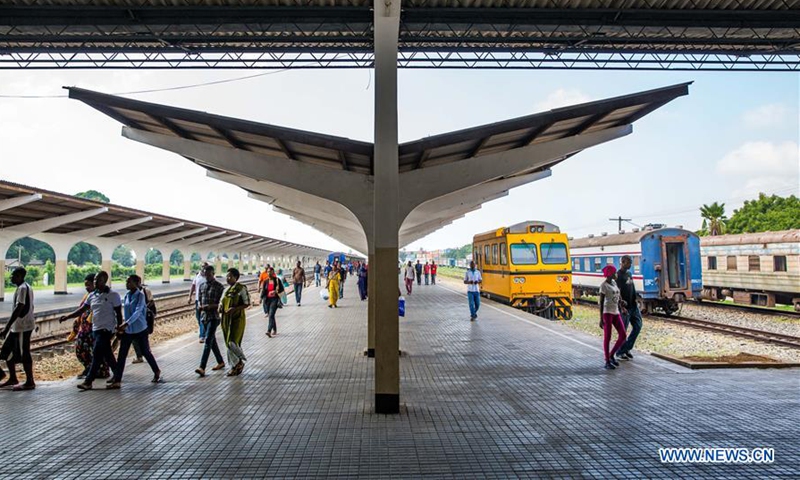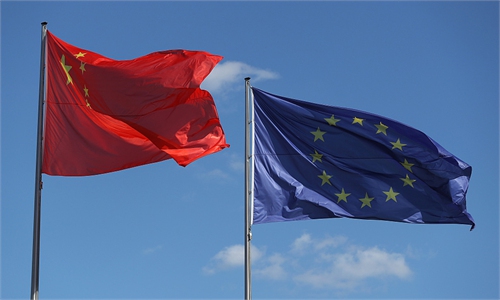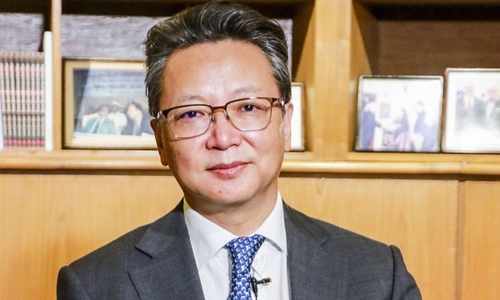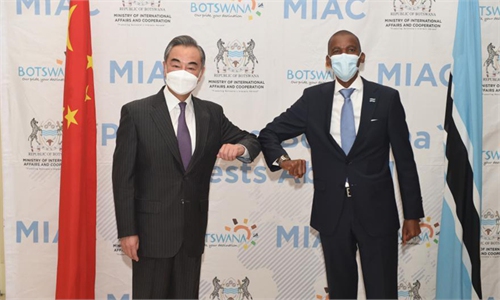
Passengers leave a train after arriving at the Dar Es Salaam station of Tanzania-Zambia Railway in Dar Es Salaam, capital of Tanzania, Feb. 14, 2019. File photo: Xinhua
China published a white paper on the country's international development cooperation on Sunday, vowing to push forward the Belt and Road Initiative (BRI), support developing countries to strengthen their ability to develop their economies, and join hands to tackle international humanitarian challenges.
By reaffirming that promoting a global human community of a shared future is the mission of China’s international development cooperation, the white paper also stresses that South-South cooperation is the focus, and Belt and Road cooperation is a major platform.
“China’s development cooperation provides a platform of mutual assistance between developing countries. It falls into the category of South-South cooperation and therefore is essentially different from North-South cooperation,” read the white paper.
The principles for China’s international development cooperation center on respecting each other as equals, doing the best China can do to help, providing the means for independent economic growth, ensuring delivery and sustainability, among others.
For instance, China has actively shared technology achievements with other countries in recent years, including training around 7,700 people from more than 100 developing countries and regions, and launching training projects on 3D printing and satellite applications, according to the white paper.
Over recent years, China has steadily increased the scale and further expanded the scope of its foreign aid.
From 2013 to 2018, China provided 270.2 billion yuan ($41.73 billion) in financial aid to foreign countries and regions, including gratuitous aid of 127.8 billion yuan, accounting for 47.3 percent of the total. The aid was mainly provided to help other developing countries build small and medium-sized social welfare projects and to fund projects for cooperation in human resources development, technical cooperation, material assistance, and emergency humanitarian assistance, according to the white paper.
In the medical sector, China had dispatched 27,484 medical workers in 1,069 groups to 72 countries and regions by the end of 2019. They worked in all departments of medical and health care, including internal medicine, surgery, gynecology, pediatrics, traditional Chinese medicine, anesthesiology, patient care, pathology, clinical laboratories, and public health.
In 2020, COVID-19 broke out in many places around the world and spread quickly. China not only ensured its own effective response and sufficient supplies, but also did all it could to aid more than 150 countries and international organizations based on the severity of their outbreaks, their medical and supply capabilities, and their actual needs. “This was China’s most intensive and largest-scale emergency humanitarian assistance mission since 1949,” said the white paper.
“It aims to enhance the understanding of the international community of China’s international development cooperation, and show’s China’s commitment to build a global community of a shared future,” China International Development Cooperation Agency said on Sunday.
The agency noted the white paper shows China’s open and inclusive attitude toward international cooperation, support to multilateralism and active willingness to participate in the reform and creation of the global governance structure.
As an active contributor to the implementation of the UN 2030 Agenda for Sustainable Development, China has been assisting other developing countries in reducing poverty, boosting agricultural progress, supporting equal access to education, improving infrastructure, and accelerating industrialization, vowing to continue to do so.



